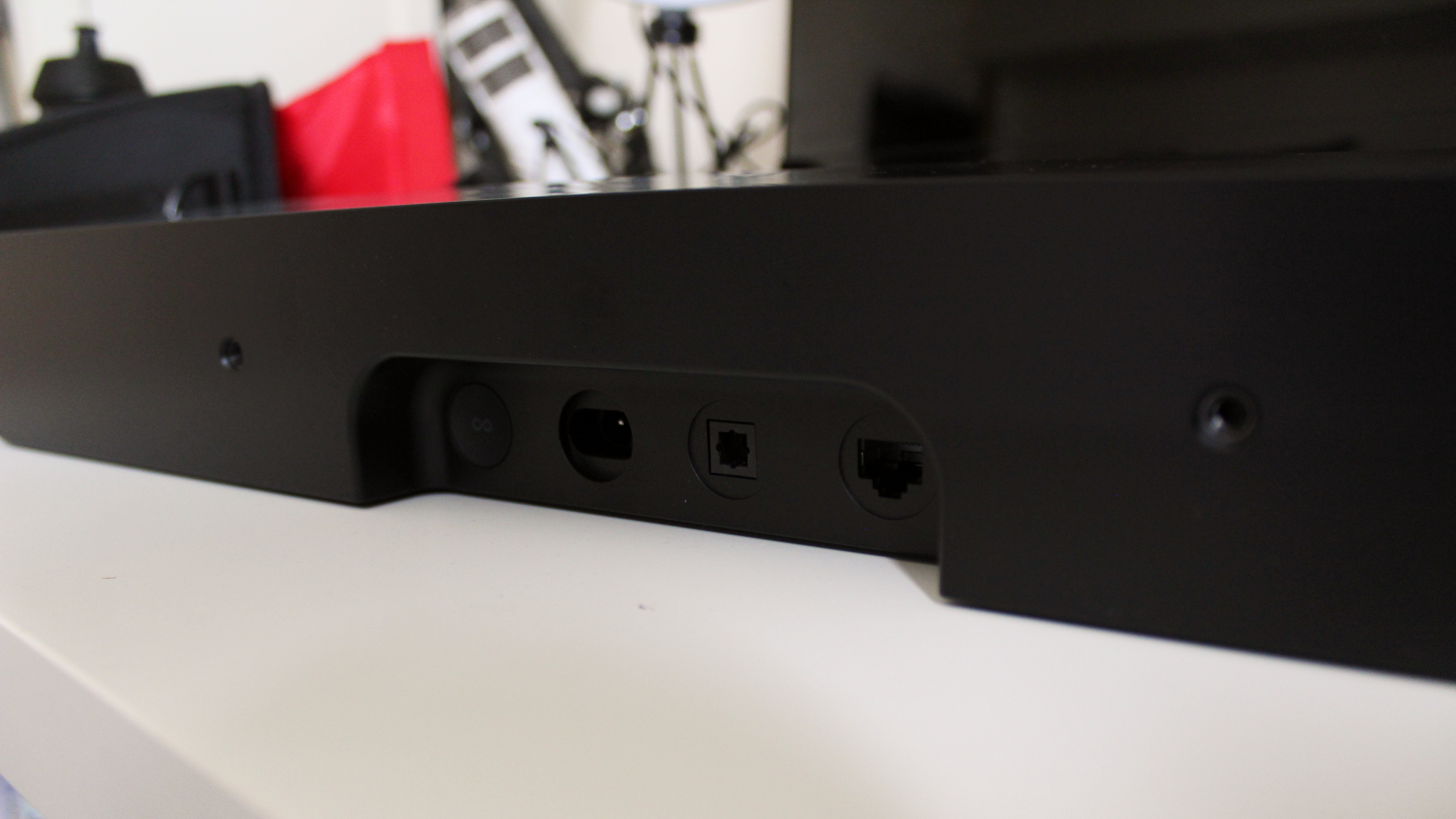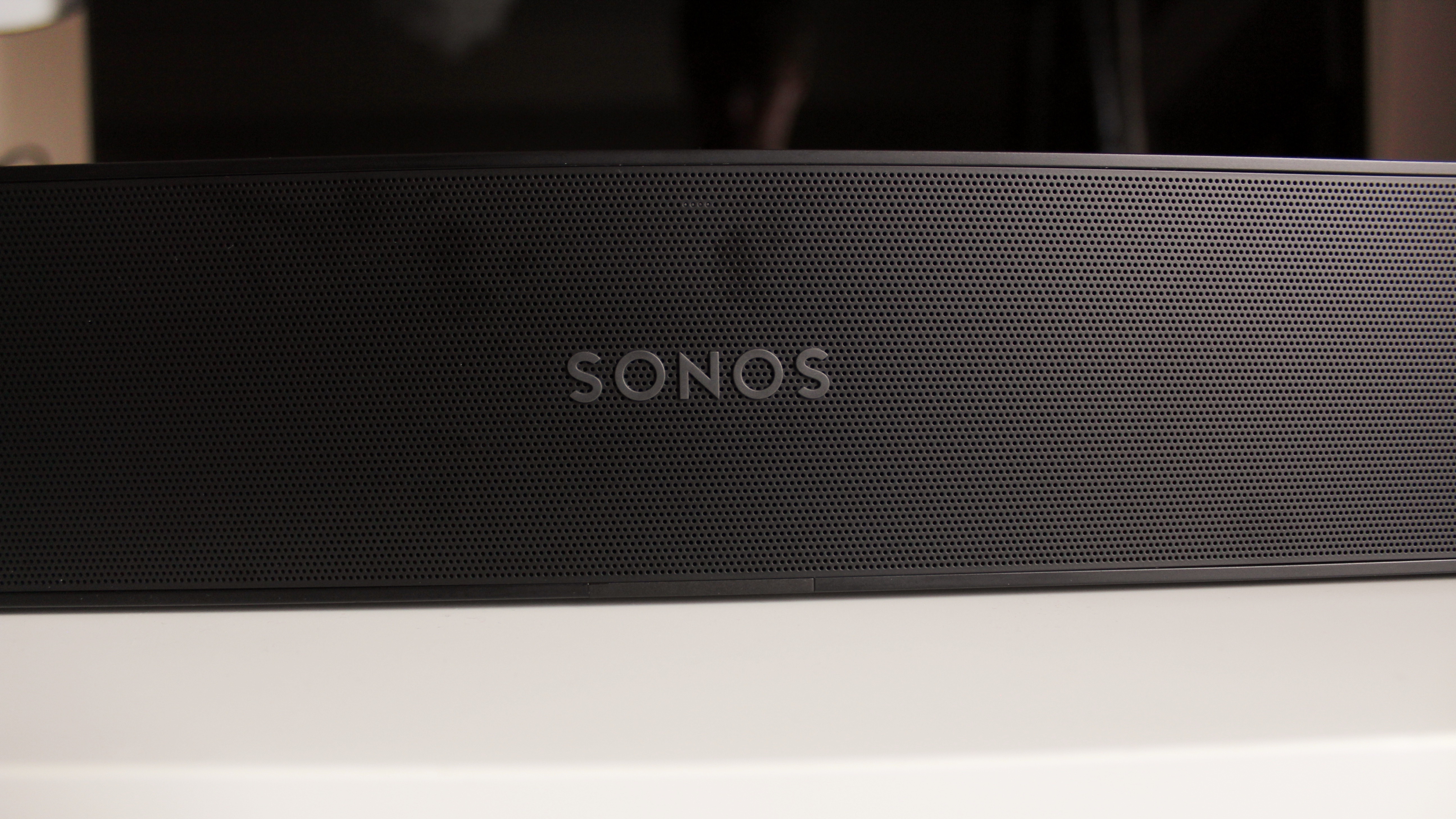iMore Verdict
Bottom line: The Sonos Ray is a wonderful, punchy speaker that sounds brilliant in small spaces. It has a small lovely form factor that makes it ideal for those limited with space. However, it doesn't have the beef of larger soundbars in filling a room, and the lack of HDMI or 3.5mm connectivity is a huge pain.
Pros
- +
Sounds incredible
- +
Great design and build quality
- +
Small form factor
- +
No separate bass unit
- +
AirPlay 2 and Wi-Fi
- +
Easy setup
Cons
- -
Only has optical connectivity
- -
No HDMI
- -
No 3.5mm
- -
Narrow sound
You can always trust iMore.
The Sonos Ray has some of the crispest sound I’ve ever heard from a small speaker.
Upgrading your sound is a great way to vastly improve the overall experience of your home theater system, and a sound bar can often be the perfect compromise between a full-blown surround sound system and your TV's terrible audio.
However, many soundbars are either rather expensive or come with a separate subwoofer module that takes up a lot of space and more than one wall outlet. Sonos' new Ray soundbar aims to fill this gap with an all-in-one soundbar that boasts crisp, punchy sound and a reasonable price tag.
If you're looking for a small, compact sound bar to fill a room while you watch TV, then the new Sonos Ray is absolutely a worthy contender for consideration.
Unveiled this year, it delivers the great sound quality you might expect from Sonos while trading away some of the better features of its more expensive works. While there are some limitations to the new Ray, it's a great all-in-one option for plenty of people.
Price and availability

The Sonos Ray is available in a range of countries. It costs $279/£279 and can be bought directly from Sonos. It's also available from Amazon in the U.K., but not in the U.S., at a slightly cheaper price of £264.99.
The Ray comes in two colors, black or white, and Sonos also offers financing through Klarna if you don't want to pay full price.
Like many great speaker ecosystems, the Ray works even better in tandem with other Sonos products. So there are also purchase options on Sonos' website for buying a Ray with Sonos 1 speakers for surround sound. The only other optional extra is a wall-mounting kit.
What you'll like

Out of the box, the Sonos Ray is really a delight. It's got fantastic build quality and feels very sturdy. The outer shell is smooth and the grill is well made.
Setting up the Sonos Ray was a really simple experience: just plug in the power cable and you’re off. You will need to download and sign in to Sonos’ app in order to set up the speaker, connect it to your Wi-Fi, and manage any settings on the device. At iMore we’re all about speakers that work with AirPlay, and the Ray responds really well to wireless music streaming. Somewhat frustratingly, it’s actually more responsive than the HomePod mini when you stream music.
The Sonos Ray has some of the crispest sound I’ve ever heard from a small speaker. The Sonos Ray puts out incredibly clear mid and high-end sounds, with absolutely tremendous clarity that is a trademark of all of Sonos’ speakers. The bass is also well-rounded, although inevitably it isn’t quite as good as the sound from a separate subwoofer. The trade-off, of course, is that you get a sound bar that costs less and takes up far less room.
The Sonos Ray has some of the crispest sound I’ve ever heard from a small speaker.
The Ray packs a real punch, on my desk I could only run it at its absolute lowest volume without disturbing my wife in the room next door, so you can guarantee that this will fill most spaces. In front of a TV, there is plenty of headroom to fill a large room with great sound whether you're gaming or watching your favorite movie or TV show.
While they are definitely very different speakers, because of its price bracket, the Sonos Ray could give the original Apple HomePod a run for its money as a speaker for hosting parties or providing music for entertainment.

The Sonos Ray has a lovely small footprint, however, it is too fat to squeeze between the bottom of your TV and the stand like some slightly lower profile sound bars. Conversely, because it’s smaller it does fit in spaces where others might not. As noted, there’s no separate sub either so you don’t need to worry about the room or a wall outlet for that.
The Sonos Ray also has some really nice and responsive touch controls that can be used to control volume and track skipping if you’re listening to music. However they’re only useful if you can reach them, so will be more relevant if you’re using the Ray as a speaker at a party or for music, as opposed to viewing for a TV show or movie.
What you won't like

There isn't too much to complain about with the Sonos Ray. The problem is, that what I don't like, the connectivity, is really quite an important feature.
I was excited to use the Ray with my Xbox Series X, however, I game through a monitor, not a TV. Unfortunately, it doesn’t have optical connectivity so I had no way to make this work. I didn’t get to try it but I think you’d have to pick up a DAC/digital to analog converter in order to make this work, and I’ve seen at least one customer testify to this as the solution. If you game through a TV that has an optical connector then this won't be of any issue to you, however, it's something to bear in mind if you are using one of the best monitors. The Sonos Ray is also not a plug-and-play solution for a desktop PC speaker, which is a shame.
The Ray is absolutely the perfect size as an all-in-one desktop solution for a PC/home office/gaming setup, except that it doesn’t have a 3.5mm input. Ray is crying out for a more accessible way to hook it up, and HDMI was probably too expensive for this price range but 3.5mm would have been a dream come true. Sadly, connectivity remains a very large frustration when using the Ray. The lack of 3.5mm seems particularly egregious like I said, because it feels really at home in an office or on a desk, save the fact there’s no easy way to use it with a monitor or a PC, laptop, or best Mac. A lack of HDMI also means no Dolby Atmos.
Ray is crying out for a more accessible way to hook it up, but HDMI was probably too expensive for this price range.
Even though it does have AirPlay so works with Apple Music, the Sonos Ray and its other products all work best with the Sonos app. This app does give you access to your Apple Music library and is more responsive overall when it comes to connecting and playing music. (The Sonos app and Ray are more responsive than using an iPhone with AirPlay and a HomePod). However, this app is a bit clunky overall and lacks the snappy responsiveness of the Apple Music app.

The Sonos Ray doesn't support Sonos' voice assistant natively, so if you have the speaker as a standalone you don't have voice control. That might be a big miss for some people used to controlling Apple Music with Siri or Spotify with something like Alexa. The Ray can be controlled using your voice when used in tandem with another Sonos Voice compatible speaker such as the Sonos One, or even a third-party speaker like Amazon Echo.
While Ray can be used in larger rooms and emits a quality sound that fills them, it does have a distinct lack of width in the sound that some people might be looking for in a home audio setup, especially if you have a wider room. It can't compete, for instance, with my stereo HomePod setup, but of course, the Ray is half the price of this setup. The Ray will provide a much more immersive setup when paired with multiple Sonos speakers, but this will certainly add to the price.
Competition

The competition for the Sonos Ray really depends on why you might buy it. You're unlikely to buy a Ray just for use as an AirPlay 2 speaker, and I would definitely recommend a HomePod or something like the Sonos Five or a couple of Sonos One speakers for that purpose.
The Bose TV speaker soundbar comes with Bluetooth, HDMI, AUX 3.5 mm connectivity, and a remote for the same price. While we haven't tested this on iMore to compare sound quality, Bose's option looks like a better deal on paper in terms of utility.
If you're truly passionate about home theater you might want to stretch to Sonos' own Beam. This scored very highly in our review and comes with many of the same great features as the Ray, but also Dolby Atmos, HDMI eARC, and voice control for the price of £449/$449 making it one of the best AirPlay 2 soundbars you can buy.
Should you buy it?

You should buy the Sonos Ray if...
- You want a cheap, good-quality sound bar
- You don't mind optical connectivity
- You don't need 3.5mm or HDMI input
- You want a good AirPlay 2 speaker with good wireless connectivity
- You're limited on space
You should not buy the Sonos Ray if...
- You want an HDMI or AUX soundbar
- You want a soundbar with a vast, wide soundscape
- You just want a speaker for listening to music and hosting parties
- You want voice control
So there, you have it. I really like the Sonos Ray for its clear, excellent sound profile and its neat footprint. However, I can't help but feel that it is really held back by its connectivity in ways that really limit its usefulness. If this had a 3.5mm headphone jack it would be an almost perfect solution for any desktop gaming setup. As it stands, optical connectivity limits this to use exclusively with a TV setup, probably as intended, but still something you should consider.
It is lacking the major soundscape of a larger, more expensive sound bar, but for the price, you're getting great sound and convenience in a reasonably sized package. Just make sure you know exactly why you want a soundbar and what kind of connectivity you need before taking the plunge.
As mentioned, if you want HDMI connectivity or easy use with a PC or monitor setup, you might want to look elsewhere.

Sound that fills a room
With its small form factor and punchy sound, the Sonos Ray is perfect for anyone looking for an optical sound bar on a budget, complete with AirPlay 2 functionality.

Stephen Warwick has written about Apple for five years at iMore and previously elsewhere. He covers all of iMore's latest breaking news regarding all of Apple's products and services, both hardware and software. Stephen has interviewed industry experts in a range of fields including finance, litigation, security, and more. He also specializes in curating and reviewing audio hardware and has experience beyond journalism in sound engineering, production, and design. Before becoming a writer Stephen studied Ancient History at University and also worked at Apple for more than two years. Stephen is also a host on the iMore show, a weekly podcast recorded live that discusses the latest in breaking Apple news, as well as featuring fun trivia about all things Apple. Follow him on Twitter @stephenwarwick9

